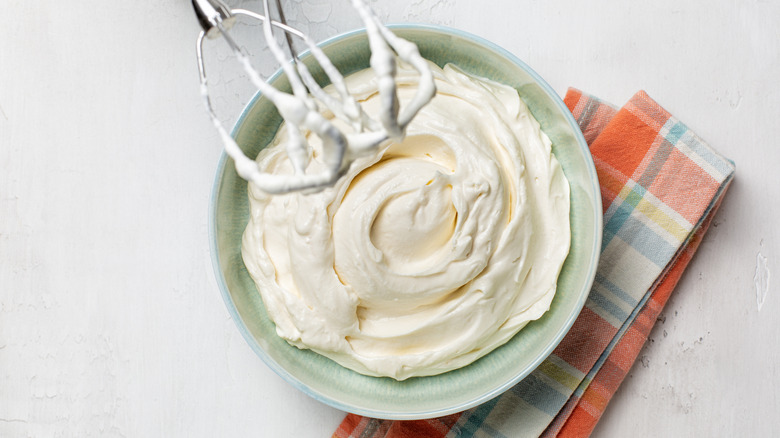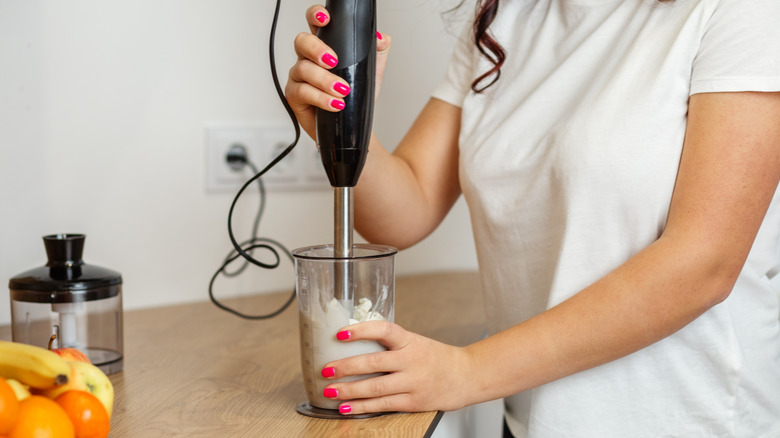Out Of Heavy Cream? Combine Milk With This Everyday Ingredient
As a cooking ingredient, heavy cream is one of the best ways to add a quick dose of creaminess and dairy fat to a range of dishes, both savory and sweet. However, since it's so versatile in both types of recipes, it's easy to run out without realizing it. That's when knowing how to whip up a quick approximation becomes the best way to avoid an impromptu visit to the grocery store.
According to U.S. federal regulations, heavy cream must contain no less than 36% dairy fat. By contrast, whole milk contains only 3.25% dairy fat. To bring that percentage up, melt a quarter cup of unsalted butter, let it cool, then whisk it into your milk. A thorough whisking ensures the fat distributes evenly throughout the mixture, creating the closest substitute to true heavy cream you can make outside of a grocery store.
This is an especially useful substitute when you need the texture, taste, and moisture-to-fat ratio of heavy cream — such as for a creamy pasta sauce. However, if you plan to use this mixture for whipped cream, ice cream, or anything where the texture of the liquid needs to change significantly, you'll need to emulsify it first.
How and when to emulsify this substitute
If you're using a milk-and-butter substitute for certain recipes, you need to make sure the mixture is emulsified, not just mixed. Mixing simply ensures a relatively even distribution of two ingredients, while emulsifying binds them together, preventing separation later. This is particularly important when you need the fat in your substitute to perform like the fat in true heavy cream.
Using a high-powered or immersion blender, blend the mixture for at least three minutes, or until the butter and fat are visibly incorporated into the milk. Once you no longer see any droplets of butter suspended in the milk, the mixture should be ready. You can blend the ingredients hot or cold, but if using a traditional blender with a hot mixture, be sure to remove the lid insert so pressure doesn't build up.
While emulsifying may not be crucial for pasta sauces, it's absolutely vital when your substitution needs to behave like heavy cream at a molecular level. You can make homemade whipped cream because agitating heavy cream causes its fat molecules to trap air, creating a fluffy, delicate solid. Even three-ingredient ice cream requires a certain amount of dairy fat to slow the formation of ice crystals and yield a creamy, rather than icy, texture. So, if you're just looking for flavor, feel free to skip emulsifying if you're short on time. But if you need your substitute to behave — not just taste — like heavy cream, always emulsify first.


